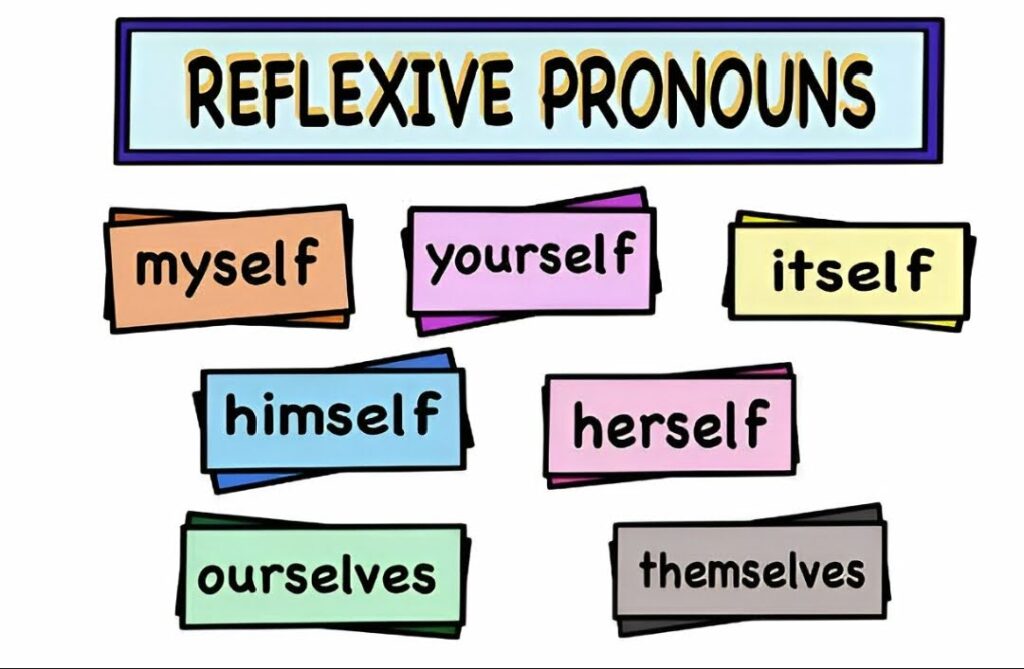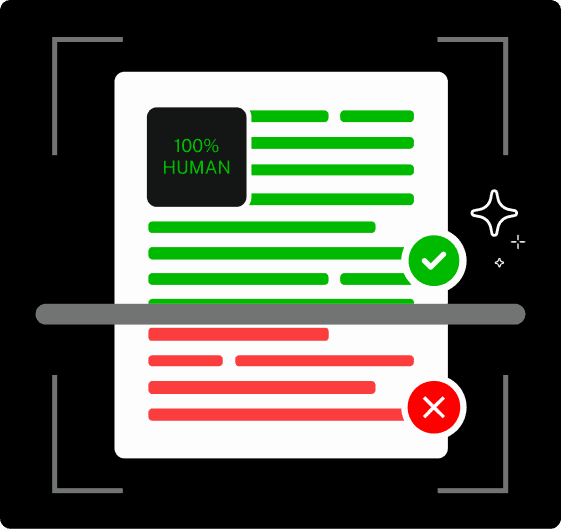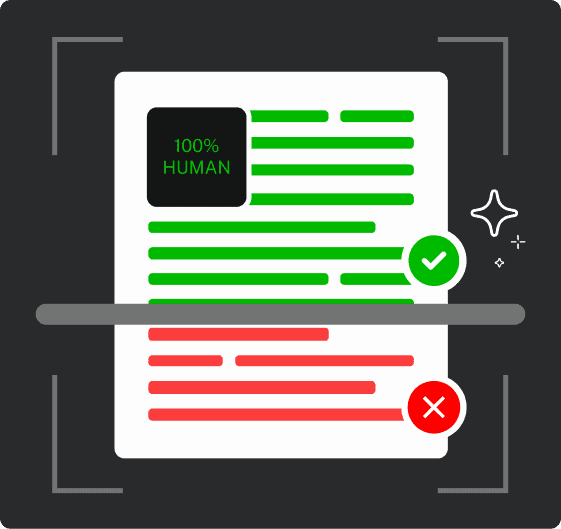Pronouns are commonly perceived by people as words which substitute nouns.
It is not only so when it comes to reflexive pronouns since they are so much more.
These are special pronouns, which turn a language to a mirror that reflects the action to that person or that thing that is doing it.
You may be unfamiliar with what is a reflexive pronoun and may wish to have a basic guide with the examples of the use of reflexive pronouns. Well, you are in the right place.
Key Takeaways
- Reflexive pronouns always reference the subject in the sentence.
- There are only 8 acknowledged reflexive pronouns.
- They’re derived from personal pronouns.
- Unlike intensive pronouns that are used for emphasis and are optional, reflexive pronouns are necessary for meaning in a sentence.
What Is a Reflexive Pronoun?

Reflexive pronoun is a category of pronoun that refers back to an object of the sentence which is the person or object that is performing an action.
In order to identify a reflexive pronoun, you should locate pronouns, which are concluded by -self (singular) or -selves (plural).
These reflexive pronouns are special in the sense that they connect the subject of a sentence and the object of a sentence when they refer to the same person or thing directly.


Never Worry About AI Detecting Your Texts Again. Undetectable AI Can Help You:
- Make your AI assisted writing appear human-like.
- Bypass all major AI detection tools with just one click.
- Use AI safely and confidently in school and work.
In the fashion of pronouns, reflexive pronouns are used to prevent awkward repetition.
Without them our language would be difficult to understand and awkward.
Rather than saying:
“John looked at John in the mirror,”
We say:
“John looked at himself in the mirror.”
Reflexive pronouns are beautiful because they are so precise. They tell us exactly when the doer and receiver of an action are the same person.
To generate this same beauty using reflexive pronouns in your write-ups and avoid grammatically unsound sentences, use our Grammar Checker to ensure your work is grammatically correct.

List of Reflexive Pronouns
Reflexive pronouns, like most pronouns, can be used in both the singular and plural forms.
We have explained the different reflexive pronouns that are available and given examples to help you understand how to use them.
Singular Forms
These include Myself, Yourself, Himself, Herself, and Itself.
Myself – This is what you use when the pronoun “I” is the subject.
- “I accidentally cut myself while cooking.”
- “I found myself humming that song all day.”
Yourself – is used when “you” is the subject (one person)
- “You should give yourself more credit.”
- “Did you hurt yourself during the game?”
Himself – is gender specific and used when “he” is the subject
- “He prides himself on his cooking skills.”
- “He blamed himself for the mistake.”
Herself – is used when “she” is the subject, as opposed to “he”
- “She congratulated herself on the promotion.”
- “The actress prepared herself for the audition.”
Itself – is used when “it” is the subject, for things that aren’t alive or animals.
- “The cat cleaned itself after eating.”
- “The problem will solve itself over time.”
Plural Forms
When you use the plural form of reflexive pronouns, you are talking about more than one person.
They are Ourselves, Yourselves, Themselves.
Ourselves – When “we” is the subject, we use this plural form. “Ourselves” includes both the speaker and other people in the situation.
- “We prepared ourselves for the long journey.”
- “Let’s introduce ourselves to the new neighbors.”
Yourselves – This is used when “you” is the subject referring to multiple people, excluding the speaker from the action in the sentence.
- “You should all be proud of yourselves for finishing the project.”
- “Please make yourselves comfortable.”
Themselves – This is used when “they” is the subject without using “you”
- “They found themselves in an awkward situation.”
- “They introduced themselves at the start of the meeting.”
Forming Reflexive Pronouns from Personal Pronouns
Reflexive pronouns are not invented; they are formed out of common personal pronouns such as I, you, he, she, it, we and they.
You can form the reflexive pronouns by adding the objective personal pronouns to the endings -self (one person) or -selves (numerically more than one person).
| Personal Pronouns (Subject) | Personal Pronouns (Object) | + Self/Selves = Reflexive Pronouns |
| I | Me | + myself |
| You (singular) | You | + yourself |
| He | Him | + himself |
| She | Her | + herself |
| It | It | + itself |
| We | Our | + ourselves |
| You (plural) | You | + yourselves |
| They | Them | + themselves |
The above table and examples should help you understand how reflexive pronouns work.
However, if things are still confusing, there’s a reliable shortcut for you to get things faster.
Consult our Ask AI to help students identify the correct reflexive pronoun for a sentence.
This is particularly useful for school projects where you, as a student, need to practice matching subjects with their corresponding reflexive pronouns.
AI can give you feedback right away and make practice sentences that are right for your level of skill.

How Reflexive Pronouns Work in Sentences
Reflexive pronouns aren’t just thrown into sentences for fun.
They play important, specific roles that are necessary for clarity.
The basic pattern that reflexive pronouns take in English sentences is the subject the the verb, which is followed lastly with the same subject (as object).
Now, based on this, they serve the following functions:
- When the Subject and Object Are the Same
This is what reflexive pronouns are about. When the subject and the object are the same person, a suitable reflexive pronoun is used.
Examples:
- “Sarah taught herself piano.” (Sarah is did both the teaching and learning alone)
- “The cat groomed itself.” (The cat is carrying out the grooming by itself)
- “We reminded ourselves to call Mom.” (The people are the reminder-givers and the ones being reminded)
Without reflexive pronouns, these sentences would be awkward and sound clunky:
- “Sarah taught Sarah piano.”
- “The cat groomed the cat.”
- “We reminded us to call Mom.”
- Role in Emphasizing the Actor
Reflexive pronouns can also make things more important, even if the subject and object are not the same.
This is an emphatic use of reflexive pronouns. This usage makes the sentence stronger.
Once used this way, the reflexive pronoun highlights that someone accomplished something personally.
For Emphasis:
- “I built this house myself.” (Emphasizes personal achievement)
- “The CEO himself answered the phone.” (Emphasizes the CEO doing a typically lower-level task)
- “They organized the entire event themselves.” (Emphasizes their independence and capability)
- Sentence Positioning and Syntax Rules
The wrong positioning of reflexive pronouns in a sentence can change the meaning as well as grammatical correctness of the sentence.
Standard Object Position:
- “She introduced herself to the group.” (Direct object)
- “He bought himself a new house.” (Indirect object)
Emphasis Position (End of Sentence):
- “I’ll handle this myself.”
- “They painted the house themselves.”
After Prepositions:
- “Keep some money for yourself.”
- “He was talking to himself.”
- “She felt proud of herself.”
Reflexive Pronouns vs. Intensive Pronouns

The two types of pronouns share a shocking similarity, but they’re used differently.
For people just getting acquainted with reflexive pronouns, the appearance of intensive pronouns can be confusing.
We can clear up this confusion better below.
- Shared Forms, Different Functions
Reflexive and intensive pronouns are two types of pronouns, but they are incredibly different in terms of what they do in sentences. Words may appear similar but they do quite different things.
The primary distinction between these pronouns is the fact that the use of reflexive pronouns is required to complete the meaning of the sentence.
In the meantime, intense pronouns are not obligatory and serve to emphasize something.
- How to Spot the Difference in Context
The easiest method to determine what type you possess is the so-called removal test:
An intensive pronoun is the one that you can remove from a sentence, and it continues to make sense.
Still, it becomes a reflexive pronoun when the sentence sounds senseless or is altered in meaning, when the pronoun is removed.
One should keep in mind that reflexive pronouns are grammatically obligatory.
They are so to enable the sentence make sense because in such cases, the subject and object are the same person or thing.
- Visual Examples and Sentence Comparison
Let’s make a better comparison between both types of pronouns so you have a better understanding of their differences.
- “She taught herself to drive.”
- Remove “herself” → “She taught to drive.” (Incomplete sentence.)
- “The door locked itself.”
- Remove “itself” → “The door locked.” (Different meaning – suggests someone else locked it.)
- He blamed himself for the accident.”
- Remove “himself” → “He blamed for the accident.” ( Incomplete and grammatically incorrect.)
- “They introduced themselves to the guests.”
- Remove “themselves” → “They introduced to the guests.” (Who did they introduce? The sentence breaks down.)
- “I reminded myself to call the doctor.”
- Remove “myself” → “I reminded to call the doctor.” (It’s missing the object. Who was reminded?)
On the other hand, intensive pronouns are not necessary in the sentence.
They can only add emphasis to who did something.
- “The president himself answered the phone.”
- Remove “himself” → “The president answered the phone.” (Complete and same meaning)
- “I baked this cake myself.”
- Remove “myself” → “I baked this cake.” (Complete and same meaning)
- “The manager herself handled the complaint.”
- Remove “herself” → “The manager handled the complaint.” (Still complete. Just less dramatic.)
- “We ourselves completed the entire project.”
- Remove “ourselves” → “We completed the entire project.” (The meaning remains the same.)
- “You yourself said it was a better idea.”
- Remove “yourself” → “You said it was a better idea.” ( Still works fine without the emphasis.)
Common Mistakes and How to Avoid Them
Reflexive pronouns might appear to be straightforward.
They are however misused by people who are not familiar with them. With these tips, you will be a pro at avoiding them.
- Reflexive pronouns cannot be substituted with the ordinary object pronouns like me, him, her, them or us. Therefore, they are applied only when the subject is in an act of doing something to himself or herself.
- Reflexive pronouns are not able to be a self-standing subject of a sentence. They must mention something that has been previously determined. Just give them a clear subject to work on always.
- Besides, use the common forms of reflexive pronouns. When a reflexive pronoun does not appear on the official reflexive list, it does not appear in proper grammar, to which you should start getting acquainted.
- Do not overuse intensive pronouns in order not to make your writing sound weird or even theatrical. Use them only when they bring something valuable to the sentence.
- The subject and the reflexive pronoun that you use should be of the same number and person. With this in mind, avoid using male reflexive pronoun to describe a female. And, most importantly, do check that you are using the correct plural form when you speak of two or more people.
- Finally, make use of our AI Chat which will give you an immediate review of your sentences with reflexive pronouns. You can get immediate feedback on tricky sentences and build confidence with proper usage of reflexive pronouns.

Want to give our AI Detector and Humanizer a spin? They’re right below!
FAQs
What Is The Difference Between “Myself” and “Me”?
“Me” is a pronoun that refers to other people, while “myself” is a pronoun that looks back at itself. You can only use “myself” when you are doing something to yourself..
Only use “myself” when you (the subject) are doing something to yourself. When someone else is doing something to you, say “me.”
Can Reflexive Pronouns Be The Subject Of A Sentence?
No. This is because reflexive pronouns can never take the subject position of a sentence.
They have to go back to a topic that has already been set.
When Should I Use “Ourselves” Versus “Themselves”?
If the subject is “we,” which includes you, you should use “ourselves.”
On the flip side, you should use “themselves” when the subject is “they” (and not including yourself).
Are There Any Reflexive Pronouns I Should Avoid?
Generally, yes. You should avoid non-standard forms that people sometimes incorrectly use, such as meself, hisself, and theirself.
They are either made up and not recognized grammatically or archaic and out of modern usage.
It’s best to use the standard forms like myself, yourself, himself, herself, itself, ourselves, yourselves, themselves.
Final Thoughts
The question of what’s a reflexive pronoun is might have confused you for a while now.
However, with this guide, you should be clear that it’s a pronoun that serves a self-referencing role in a sentence.
The reflexive pronoun can’t be done away with on a whim, as they’re essential for meaning-making in the sentence or your speech.
Nevertheless, although the pronouns used in reflective pronouns are also used for intensive pronouns, their roles are different and merely optional.
Hence, they can be taken out. Above all, you can use our Ask AI feature to get a better hang of what a reflective pronoun is.
Refine your grammar and sound human every time—try Undetectable AI.
